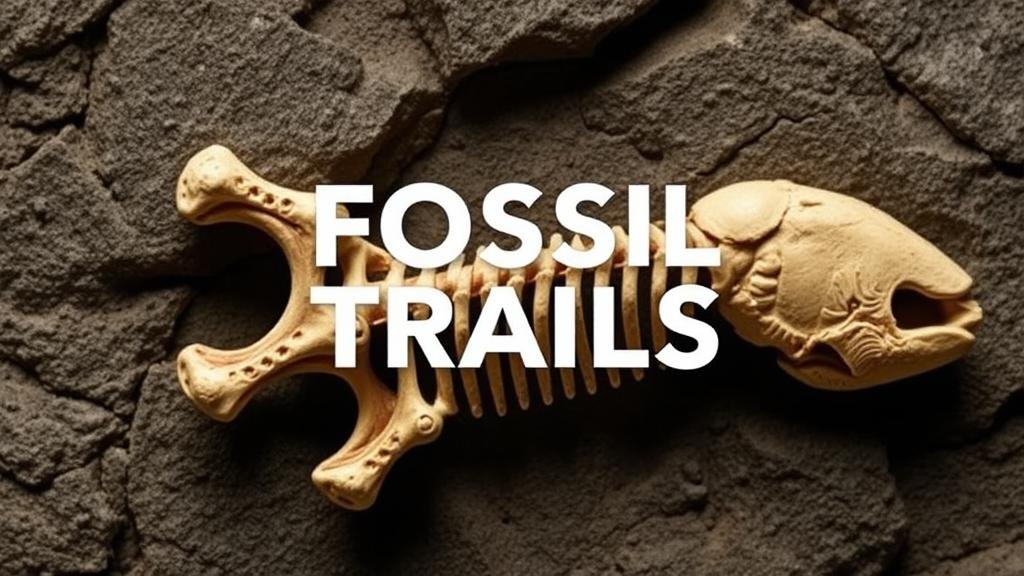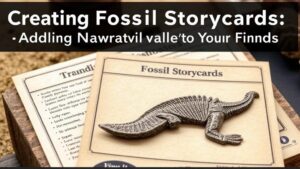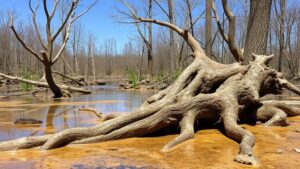Fossil Trails: Mapping Prehistoric Ecosystems through Ancient Bones
Fossil Trails: Mapping Prehistoric Ecosystems through Ancient Bones
For rockhounds and mineral collectors, the allure of fossils represents a fascinating intersection of history, biology, and geology. Fossils not only serve as ancient relics but also play a crucial role in reconstructing prehistoric ecosystems. This article delves into how the study of fossil trails and ancient bones can help map out our planets ecological history, providing both scientific insights and practical tips for budding collectors.
The Science of Fossilization
Fossilization is a complex geological process that occurs over millions of years, transforming organic material into bone or stone. In practical terms, when an organism dies, its remains may become buried by sediment, protecting them from decay. Over time, minerals in water seep into the remains, effectively replacing the organic material with mineral deposits.
To understand the fossilization process, it is useful to know that:
- Approximately 95% of all organisms that have ever existed on Earth did not become fossils.
- Only under specific conditions — such as rapid burial and low oxygen environments — do fossils form, highlighting the rarity of finding ancient bones.
Decoding Fossil Trails
Fossil trails, or ichnites, capture the behavior of ancient organisms, serving as a record of their movements through various prehistoric environments. These trails can include footprints, burrows, and other markings left by creatures as they traveled through mud, sand, or other substrates.
By analyzing fossil trails, paleontologists can infer:
- The size and shape of the organism
- Behavioral patterns, such as hunting or migration
- Environmental conditions, such as climate and habitat
For example, the discovery of dinosaur footprints in La Brea Tar Pits (California) has provided invaluable information about the behavior of these ancient reptiles, suggesting they traveled in packs and had diverse diets. This information can be crucial for understanding evolutionary adaptations over time.
Mapping Prehistoric Ecosystems
Mapping prehistoric ecosystems through fossil evidence involves a multidisciplinary approach that combines paleontology, geology, and ecology. Fossils give insights into ancient flora and fauna, allowing scientists to reconstruct the ecosystem dynamics of a given area.
During the Late Jurassic period, for instance, fossil analysis indicated a wet, lush environment with diverse species of plants and animals. By examining fossilized leaves and pollen grains alongside vertebrate fossils, researchers have reconstructed an intricate picture of life during this period. Key metrics include:
- The identification of over 100 species of dinosaurs in specific regions
- The discovery of more than 100,000 fossilized plant specimens
This comprehensive data helps scientists identify how ecosystems evolved in response to climate shifts, such as the transition from the Pleistocene Ice Age to warmer interglacial periods, revealing the survivors and extinctions throughout history.
Practical Tips for Rockhounds and Mineral Collectors
If you find yourself fascinated by prehistoric ecosystems and the study of fossils, consider the following tips to enhance your collecting experience:
- Research Local Sites: Begin by researching local fossil sites. Museums and geology clubs often provide great resources for identifying potential areas.
- Get the Right Tools: Equip yourself with essential tools such as hammers, chisels, brushes, and magnifying glasses. A good collection bag or container is also crucial to protect your finds.
- Join a Community: Engaging with other collectors can deepen your understanding. Local rockhound clubs often host field trips, workshops, and exhibitions.
Conclusion: The Takeaway
Fossil trails and ancient bones offer a unique glimpse into the intricate tapestry of prehistoric life. For rockhounds and mineral collectors, pursuing these ancient artifacts can be both rewarding and educational. By understanding the fossilization process, analyzing trail markers, and mapping ecosystems, enthusiasts can contribute to the broader understanding of Earth’s biological history.
As you embark on your collecting journey, remember that each fossil is a storytelling relic — a snapshot of life from a distant past. Happy hunting!



